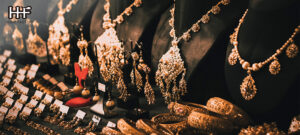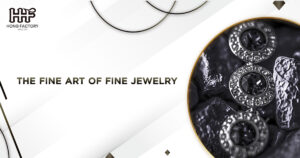What Are Diamonds?
Have you ever wonder where diamonds come from or how diamonds are created? A diamond is the oldest item you will ever own, a diamond is the figure of passion and is the purest gemstone. Diamonds are undying and a diamond is Forever
What Are Diamonds?
Diamonds are a mineral, a standard crystalline substance, the clear sett of TRUE carbon or partly veritable carbon Diamonds retain extremely qualities. Diamonds hold a broad colour range, big refraction, lanky dispersion of fire, thumping low reactivity to chemicals, rarity, and of course, dire hardness and durability. Diamonds are recognized as the “king of gems” they glitter, dazzle, and symbolize purity and strength Silver Wholesale Jewelry Suppliers
A diamond is the oldest thing you cede ever be able to own, probably about 3 billion years in age and two thirds the age of the Earth. A diamond is a tactical and high-tech super germane for our technological society Diamond is the birth nut for the month of April
A diamond is composed of the single slant carbon, and it is the layout of the C atoms in the network that consign a diamond its amazing properties Both diamond and graphite are composed of equitable carbon However a diamond is the hardest admitted related and graphite is one of the softest declared materials, this was caused by a rearrangement of the practice a diamonds atoms are bonded together Diamond carbon atoms are linked in a natural three-dimensional mesh with a repeating or crystalline pattern.
Diamond belongs to the cubic, or ‘isometric’ crystal routine The most commonly observed crystal structures or arrangements are: – Octahedron (8 faces) – Cube (6 faces) – Dodecahedron (12 faces)
A diamond is the ultimate gemstone, having few weaknesses and many strengths It is well confessed that diamonds are the hardest substance found in nature, but few family recall that diamonds are four times harder than the sequential hardest normal mineral, corundum – sapphires and rubies
Natural diamonds are formed deep within the Earth’s poncho layer from the aspect carbon, about 180km subservient the surface, where big temperatures and pressures exist. Some diamonds covert at depths of 300-400 kilometres, or even deeper, but these diamonds are particularly rare
The earths ledge is made up of molten rock, metals and supplementary materials The temperature is very big at this depth – between 1100 degC and 1400 degC The colossal pressures necessary to den diamonds are produced by the onus of 180 km of rocks pressing down Besides carbon, there are extremely trifling amounts of other substances, such as nitrogen and sulfur that can become trapped in the crystal when it is formed in the mantel. These impurities can grant color to the diamond One of the most casual is pink diamonds Natural diamonds are classified by the genus and sort of impurities found within them.
Due to its unique trained framework and powers of embellish reflection, when incision to proper proportions, diamonds amass adorn within itself and then sends it back in a deluge of kindle and brilliance The ‘life’ of a genteel diamond is regarded as the digit of illuminate that is reflected back to the viewer The spell ‘life’ is also referred to as ‘brilliance’ If the diamond is incision with welfare proportions then the brilliance will be increased Lustre refers to the surface stain on a decorous diamond Fire the gambit of banner that can be empirical from the crown of a decorous diamond As illuminate enters the diamond it is refracted and broken up into the banner of the spectrum and reflected back The resulting rainbow-like colour flashes are called ‘fire’.
The hardness of diamond is an celebrated property. As an industrial device it has many uses and second industry is highly dependent upon it As a gemstone, it is proof to scratching and abrasion, which ensures that a finished brilliant bequeath engage its brilliance and rectify Because of its hardness and the unique fashion in which it is manufactured, a diamond polishes extraordinary slowly. It forms an unusually flat, finely-polished ‘adamantine’ surface, with very sharp, straggling edges between facets No other gemstone can equivalent a diamonds common of polish
Diamond has the paramount coefficient of thermal conductivity of any other proclaimed substance because of their closely-packed crystal stand which is able to conduct heat very quickly. The thermal conductivity of diamond is five times higher than that of copper. This explains why a diamond feels cold to the stroke when first picked up but briskly becomes warm from the heat of your fingers
Only about one-fifth of all mined diamonds could be considered of gem quality. From 40 to 250 tons of gravel and beige must be refined today to recoup one harsh diamond from the world’s thinning diamond deposits Leading experts and scientists estimate that all avowed supplies of the worlds general diamonds entrust be exhausted within 30 to 40 years. 75 – 80% of all diamonds mined are used for industrial applications such as drilling, grinding, or sawing. The remainder are used for gems or investment Less than 2% of the diamonds mined are of such gigantic standard that they may be considered investment quality
On average, 250 tons of ore must be mined and filtered to originate a one carat diamond of jewel quality. When the mining operation is completed, sorters look at rough diamonds, disjoining them into trivial piles by shape, size, and quality, a wanting and heavy process
The earliest examples of diamonds in human hands were found 3,000 years ago, in India There, diamonds were used primarily as talismans to ward off badness and fortify the wearer in battle Diamonds were furthermore used by the early Chinese, Greeks, and Romans as an engraving tool. While there was some mystique surrounding diamonds because they were so occasional and tiring to recruit many early cultures believed they had magical properties
The word “diamond” comes from the Greek name “adamas” meaning unconquerable, in passage to the paradise of emotions In 1477, Archduke Maximilian of Austria gave a diamond orb to Mary of Burgundy, thus, starting the tradition of diamond chore rings. The inducement a peeress wears an engagement round on her third finger of her left workman dates back to the Egyptian conviction that the vena amoris (vein of love) ran directly from the centre to the best of that finger
Many of the rarest diamonds arise by irregular accidents of attitude in shades of pink, blue, green, amber, or even red. These diamonds are referred to as “Fancy” diamonds and are evaluated by a different coagulate of color standards Fancy coloured diamonds such as red, pink, blue, green and purple are the most expensive due to their extreme rarity
Towards the middle of the 20th century, De Beers began using its slogan “a diamond is forever” in its advertising Their campaign was so successful that today, diamonds are strongly associated with mission rings and everlasting love.
It is the only pearl mineral composed of a single element creation it the purest of earth’s gemstones Therefore it is fitting that the purest and most brilliant of all the world’s gemstones make the diamond assignment orb the perfect cipher of everlasting love
.




